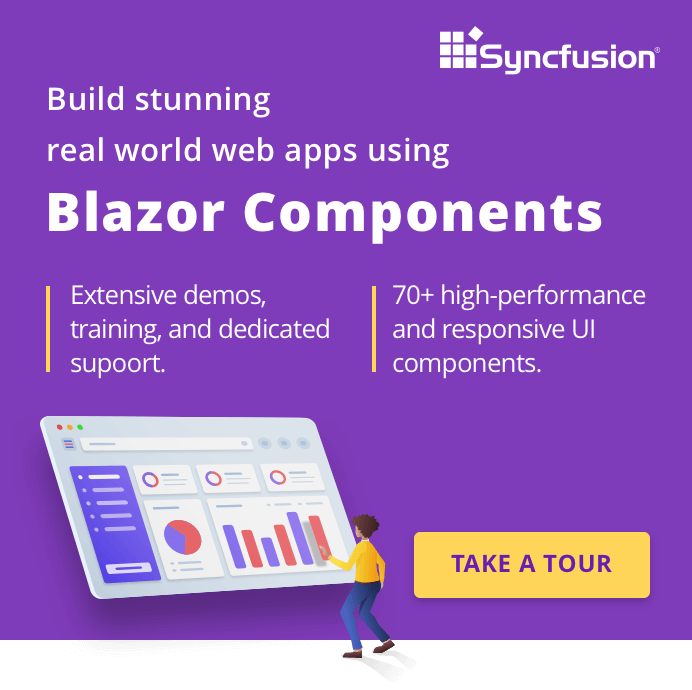Here is an article from ftp online: Communicate Between User Controls
PermalinkASP.NET FAQ - User Controls
Find answers for the most frequently asked questions
Category
- Basic
- ADO.NET
- AdRotator
- ASP.NET
- ASP.NET 2.0
- Caching
- Calendar
- CheckBox
- CheckBoxList
- Client Side Scripting
- Collections and Lists
- Config files
- Controls
- CSS Styles and Themes
- Custom Controls
- DataGrid
- DataList
- Deployment Issues
- Dropdownlist
- Error Handling
- Files
- GDI+
- ListBox
- Miscellaneous
- Output Caching
- RadioButton
- Repeater
- Security
- Serialization
- Session
- Table Control
- Templates
- TextBox
- User Controls
- XML
Expand All Collapse All
Here is an article from ftp online: Handle Events From Web User Controls
PermalinkIn the .ascx:
<asp:Image id='Image1' runat='server'></asp:Image>
In .aspx
VB.NET
<uc1:UCImage id='UCImage1' source='b2346.jpg' runat='server'></uc1:UCImage>
Dim UC As UserControl
Dim imgUC As System.Web.UI.WebControls.Image
UC = Page.FindControl('UCImage1')
imgUC = UC.FindControl('Image1')
imgUC.ImageUrl = 'b2346.jpg'
C#
UserControl UC ;
System.Web.UI.WebControls.Image imgUC ;
UC = (UserControl)Page.FindControl('UCImage1');
imgUC =(System.Web.UI.WebControls.Image)UC.FindControl('Image1');
imgUC.ImageUrl = 'b2346.jpg';
Here is an example of adding one UserControl into another:
uc1.ascx:
<asp:Label runat='server' text='uc1' ID='Label1' />
<asp:Panel runat='server' id='p1' >Panel UC1</asp:Panel>
uc2.ascx:
<br><asp:Label runat='server' text='uc2' ID='Label1' />
VB.NET
Dim uc1 As UserControl = CType(LoadControl('uc1.ascx'), UserControl)
Controls.Add(uc1)
Dim uc2 As Control = uc1.LoadControl('uc2.ascx')
Dim p1 As Control = uc1.FindControl('p1')
p1.Controls.Add(uc2)
C#
UserControl uc1 = (UserControl)LoadControl('uc1.ascx');
Controls.Add(uc1);
Control uc2 = uc1.LoadControl('uc2.ascx');
Control p1 = uc1.FindControl('p1');
p1.Controls.Add(uc2);
Create a User Control
Below Code goes in User Control
<asp:ImageButton id='ImageButton1' runat='server'></asp:ImageButton>
Create a property called source
VB.NET
Public Property source() As String
Get
Return ImageButton1.ImageUrl
End Get
Set(ByVal Value As String)
ImageButton1.ImageUrl = Value
End Set
End Property
C#
public string source
{
get
{
return ImageButton1.ImageUrl;
}
set
{
ImageButton1.ImageUrl = value;
}
}
Now in your webform:
Drag and drop User Control and set the source property.
<uc1:UCImageButton source='b2346.jpg' id='UCImageButton1' runat='server'></uc1:UCImageButton>
You can use HttpHandlers and/or HttpModules to insert information on all pages transparently. Check out Bipin Joshi’s article Extending ASP.NET with HttpHandlers and HttpModules
PermalinkOne of the approaches is to write and use a UserControl. You can define the user interface, handle events and expose properties in
a UserControl, and then mark a reference and reuse these Controls in any page of your Web application.
Here is some Sample code
PermalinkIn ASP.NET, you would typically use a User Control to create reusable controls.
PermalinkCreate a User Control
<P>
<asp:Button id='Button1' runat='server' Text='Button'></asp:Button></P>
<P>
<asp:Label id='Label1' runat='server'></asp:Label></P>
On button Click
VB.NET
Label1.Text = 'Hello'
C#
Label1.Text = 'Hello' ;
Create a Webform to use a UserControl
<asp:Panel id='Panel1' runat='server'></asp:Panel>
VB.NET
Dim myControl As Control = CType(Page.LoadControl('UC1.ascx'), Control)
Panel1.Controls.Add(myControl)
C#
Control myControl =(Control)Page.LoadControl('UC1.ascx');
Panel1.Controls.Add(myControl);
All you need to do is give your user control an ID in the aspx. e.g.
<myTagTest:MarcTest id=myUC runat='server'>
</myTagTest:MarcTest>
Then in your aspx code, you can simply use the id to call public methods (and properties) defined by the ascx. e.g.
VB.NET
myUC.writeData(...)
C#
myUC.writeData(...)
Share with
Couldn't find the FAQs you're looking for?
Please submit your question and answer.


